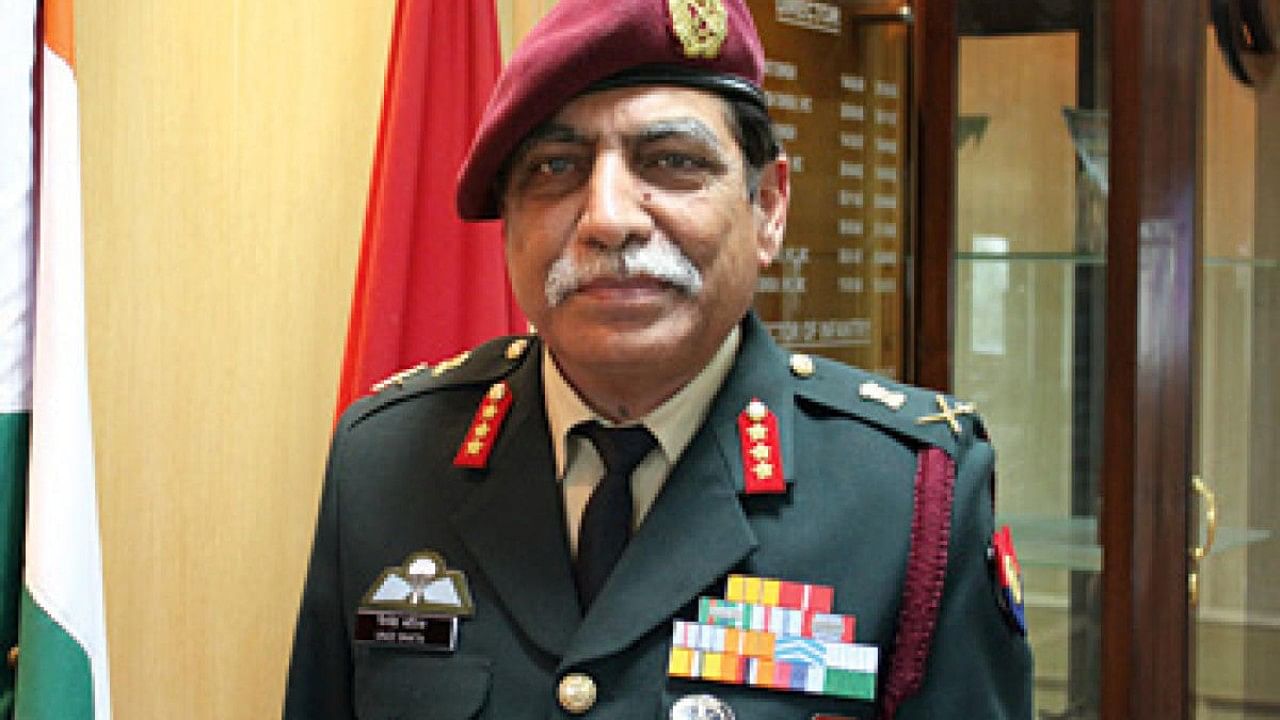
Lt Gen Vinod Bhatia (retd), a former Director-General of Military Operations, tells DH’s Anirban Bhaumik that ‘Agnipath’ is regressive and unnecessary and that the ‘Agniveers’ will be risk-averse. Excerpts:
Do the armed forces of India need a reform like ‘Agnipath’?
The ‘Agnipath’ is the biggest transformation exercise proposed to be undertaken after the one that followed the debacle in the India-China conflict in 1962. But the reform is regressive, and definitely, not necessary. India’s armed forces have demonstrated their effectiveness across the complete spectrum of conflict from 1947 onward. India’s soldiers displayed unparalleled valour even in the face of aggression by China in 1962. The soldiers, sailors and air warriors are the strength of our armed forces. They cost the minimum and deliver the maximum.
Also Read | Scattered protests during bandh against Agnipath
Will Agnipath make the armed forces leaner, smarter and more youthful? Will it raise the professional skill level of the soldiers?
The armed forces need a judicious mix of youth and experience. Over the years an optimal balance of this has been achieved, especially after the Kargil War in 1999. The youth profile was corrected based on recommendations of the Kargil Review Committee. There is no operational necessity to tinker with it. The professional skill enhancement happens through training programs and the ‘Agnipath’ actually reduces the training period. A soldier takes nearly four to five years to become an effective member of his sub-unit or his ship or his squadron. Hence, a tenure of only four years will adversely impact the training and task of an ‘Agniveer’. The challenge in training is not imparting or acquiring knowledge and skill, it is the attitude that takes time to inculcate and imbibe. Yes, the army will become leaner. The authorized strength remains unchanged. As there has been no recruitment in the last two years on account of the Covid-19 pandemic, the army has an existing manpower deficit of over 100,000 in all ranks. On average, the army’s strength depletes by 55,000 to 60,000 men every year. As the ‘Agnipath’ plans to recruit 40,000 to 50,000 soldiers every year for the next five years, it will reduce the strength and given the present deployment, especially along the India-China Line of Actual Control (LAC), place additional burden on the soldiers, cutting short the peace tenures essential for retraining.
Will ‘Agnipath’ bring down the operational capabilities of the armed forces?
The ‘Agnipath’ scheme envisages recruitment of soldiers for only four years with 25% retention thereafter. The recruitment base remains the same as do the recruitment processes, selection system, and criteria. The best will now join the central armed police forces, Assam Rifles, state police and other government services, which give an assured and permanent job without uncertainties. Secondly, the army is a way of life and a soldier prides himself in being part of a unit and regiment. He fights and dies for the “Nam, Namak, Nishan” of his unit. There is no reason for a Tour of Duty soldier to make any sacrifices. The ‘Agniveers’ will be risk averse and rightly so. A lesson should have been learned from the experience of the Russian Army soldiers in Ukraine. This will impact the intangibles we fight for and ultimately will sound the death knell for the armed forces.
Do you think that the government has taken too much risk by hurriedly moving to bring about such radical changes in military recruitment?
Yes, not only is the very concept of the ‘Agnipath’ wrong, but also the timing to implement it is also not good, given the present security challenges, especially China’s aggression along the LAC with India.
One of the arguments put forward in support of the Agnipath is that it will bring in youths, who are more in tune with latest technological trends, to the armed forces. What do you think?
Yes, this will improve the intake of soldiers who are likely to absorb and exploit technology better. However, in four years, a technician will not be adept at maintaining aircraft, ships, submarines, tanks, radars, guns, electronic warfare systems and other military hardware. The Agniveers, who will be inducted through the Industrial Training Institutes for this task. will need on-the-job training for three to four years to be adequately proficient.
You have also expressed concerns about the ‘Agnipath’ resulting in the militarization of society. Why?
The 75% Agniveers, who will not be selected for regular services in the armed forces, will go back to the villages rejected, dejected and frustrated. The reservations the government is announcing now will only help about 20% of them. The others, who will be semi-trained in use of weapons by then, may militarize the society.
The government has announced a number of sops, including reservation of jobs, for the ex-‘Agniveers’ over the past few days to quell the outrage since the formal announcement about the roll-out of the ‘Agnipath’. Do you think these could address the concerns over the scheme?
Partly yes, but the implementation will be the challenge. The government should take ownership and accountability for the success of ‘Agnipath’. At present, the armed forces are defending the scheme. However, violence in the name of protest is definitely not a solution and should be condemned by all.
What more should the government do?
Now that the scheme has been rolled out, the government could initiate this as a ‘Pilot Project’, study the cause and effect, impact on combat effectiveness, operational readiness and defence preparedness, aspirations of the youth and soldiers and thereafter review it with an open mind. Mid-course corrections should be done wherever required. The need is good Transition management, minimizing the needless turbulence and turmoil, which is likely to be caused in the armed forces.
